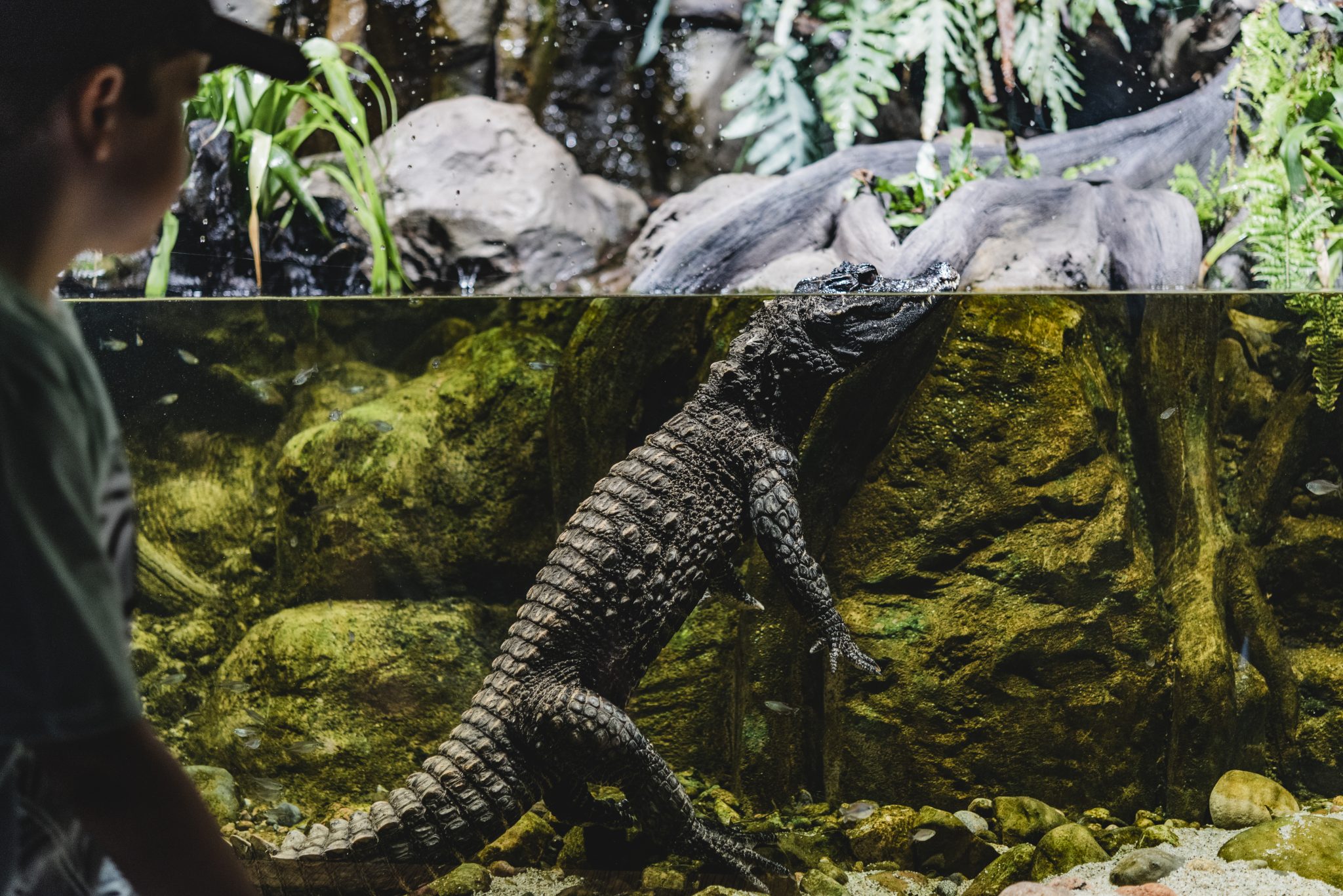Osteolaemus tetraspis
Order: Crocodilia | Family: Crocodylidae

The dwarf crocodile, the smallest species of crocodile, can be found in the tropical regions of Western and Southern Africa, including Senegal in the west, Uganda in the east, and Angola in the south. So far, two subspecies have been identified, O. tetraspis tetraspis and O. tetraspis osborni, but genetic analysis has revealed three distinct populations that should be treated as separate species. Each of these populations lives in a different region: O. tetraspis in Central Africa (excluding the Congo River Basin), O. osborni in the Congo River Basin, and an as-yet unnamed species that occurs in Western Africa. This crocodile prefers to live in shadowed, boggy forests or small, muddy, forested ponds that are often far away from large rivers, streams, and small rivers. It can also be found in saltwater in mangrove areas, but it avoids large rivers in their main sections. During the day, it hides in dug-out burrows or under flooded tree roots, whereas at night it is active and hunts both in water and on land at a certain distance away from water. Its diet consists of small animals, such as annelids, snails, insects, crabs, frogs, lizards, fish, water birds, and bats.
Interestingly enough, it will also eat fruit.

The largest specimen of this species was 1.9 m long, while the average length is around 1.5 m. O. osborni is the smallest of the separate species, not growing larger than 1.2 m, but it is also the most bulky of the crocodiles. Adults usually weigh between 18 and 32 kg, while the largest females can weigh up to 40 kg, and the largest males up to 80 kg. Its head is characterized by its blunt, short snout, with teeth adapted to crushing the shells of mollusks and the carapaces of crabs. Due to its small body size, the dwarf crocodile has a strongly armored neck, back, and tail, as well as osteoderms on its belly and the underside of its neck. Its eye color is unusual, appearing brown instead of the yellow-green found in other types of crocodiles. Adults have dark bodies with black patches that are also present on their yellow bellies. Individuals living in caves can have orange patches, probably due to bat guano that erodes the crocodile’s skin. Juveniles have a dark coloration with brown stripes on their body.
When the young are ready to hatch, they produce sounds that attract the female. She helps them get out of the eggs and carries them to water. The young, after leaving their eggs, communicate with the female and between themselves through characteristic sounds.
The dwarf crocodile leads a solitary life, gathering in groups only during the breeding season, which coincides with the wet season. During this time, females build nests out of decaying plants, where they lay around 10 eggs, although they may lay up to 20 eggs. These plants provide the ideal temperature for the incubation of the eggs, which the female guards. When the young are ready to hatch, they produce sounds that attract the female, who then helps them emerge from the eggs and carries them to water. The young communicate with the female and among themselves through characteristic sounds. The female looks after the young in the water because they may fall prey to predators. The young reach sexual maturity at a length of 1 meter for females and 1.3 meters for males. This species is successfully reproduced in captivity, and while juveniles are docile and non-aggressive, adults can be aggressive, depending on the individual’s territorial instincts.
The Dwarf crocodile on the IUCN list
This species is considered vulnerable and is under international protection. It is listed in Appendix I of CITES and Appendix A of the EU. Its population in the wild is said to be between 25 and 100 thousand, but it is hard to estimate due to the crocodile’s tendency to hide. Humans are the biggest threat to these animals. Indigenous people hunt them for their meat and skin.


